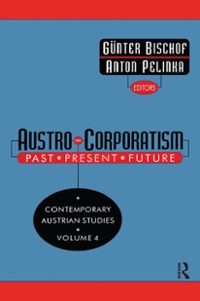KKindly assist me to tackle the following questions. Thank you
(i) Explain what is meant by the "no arbitrage" assumption in financial mathematics. 121 An investor entered into a long forward contract for a security four years ago and the contract is due to mature in five years' time. The price of the security was $7.20 four years ago and is now f10.45. The risk-free rate of interest can be assumed to be 2.5% per annum effective throughout the nine-year period. (ii) Calculate, assuming no arbitrage, the value of the contract now if the security will pay dividends of fl.20 annually in arrear until maturity of the contract. [3] (Hii) Calculate, assuming no arbitrage, the value of the contract now if the security has paid and will continue to pay annually in arrear a dividend equal to 3% of the market price of the security at the time of payment. [3] [Total 8/ An investor is considering two projects. Project A and Project B. Project A involves the investment of f1,309,500 in a retail outlet. Rent is received quarterly in arrear for 25 years, at an initial rate of f100.000 per annum. It is assumed that the rent will increase at a rate of 5% per annum compound, but with increases taking place every five years. Maintenance and other expenses are incurred quarterly in arrear, at a rate of C12,000 per annum. The retail outlet reverts to its original owner after 25 years for no payment. Project B involves the purchase of an office building for $1,000,000. The rent is to be received quarterly in advance at an initial rate of f85,000 per annum. It is assumed that the rent will increase to f90,000 per annum after 20 years. There are no maintenance or other expenses. After 25 years the property reverts to its original owner for no payment. (1) Show that the internal rate of return for project A is 9% per annum effective. (ii) Calculate the annual effective internal rate of return for Project B. Show your working. (Lii) Discuss the extent to which the answers to parts (i) and (ii) above will influence the investor's decision over which project to choose. [3] [Total 12]A company's required return for a particular investment project can be expressed as a force of interest, 8(1). This force of interest is a function of time and at any time t, measured in years, is given by the formula: 8(1) =0.05+0.002/ OSIs5 8(1) =0.06 The expenditure required for this project is a payment of (100,000 at / - 0 and a further payment of $80,000 at t = 2. The income received from the project is a payment stream paid continuously from *=8 to f = 12 under which the annual rate of payment at time , is f.100, 000,0-001 Calculate the discounted payback period for this project. [8] A pension fund purchased an office block nine months ago for $5 million. The pension fund will spend a further (900,000 on refurbishment in two months time. A company has agreed to occupy the office block six months from now. The lease agreement states that the company will rent the office block for fifteen years and will then purchase the property at the end of the fifteen year renal period for f6 million. It is further agreed that rents will be paid quarterly in advance and will be increased every three years at the rate of 4% per annum compound. The initial rent has been set #1 2800,000 per annum with the first rental payment due immediately on the date or occupation. Calculate, as at the date of purchase of the office block, the net present value of the project to the pension fund assuming an effective rate of interest of 8% per annum. [8] A fund had a value of f150,000 on 1 July 2005. A net cash flow of (30.000 was received on I July 2007 and a further net cash flow of 140,000 was received on I July 2008. The fund had a value of (175.000 on 30 June 2007 and a value of (225,000 on 30 June 2008. The value of the fund on 1 January 2009 was E280.000. (i) Calculate the time-weighted rate of return per annum earned on the fund between 1 July 2006 and 1 January 2009. [3] Calculate the money-weighted rate of return per annum earned on the fund hetween 1 July 2006 and 1 January 2009. [4] (iii) Explain why the time-weighted rate of return is more appropriate than the money-weighted rate of return when comparing the performance of two investment managers over the same period of time. [2] [Total 9]








